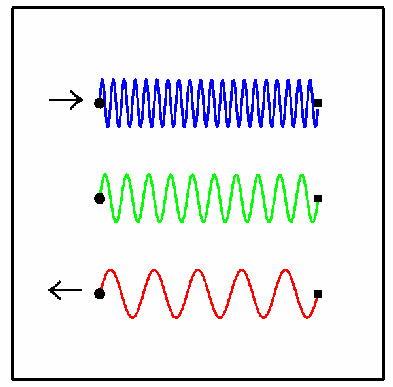
|
- An object that is a certain distance away from us is radiating light (represented by the green light wave)
- If the object starts towards us, the wavelength of the light it emits will get shorter, which means the light will be more energetic and have a higher frequency (represented by the blue light wave)
- Conversely, if the object begins to move away from us, the wavelength of the light it emits will become longer and less energetic, and have a lower frequency (represented by the red light wave)
|



